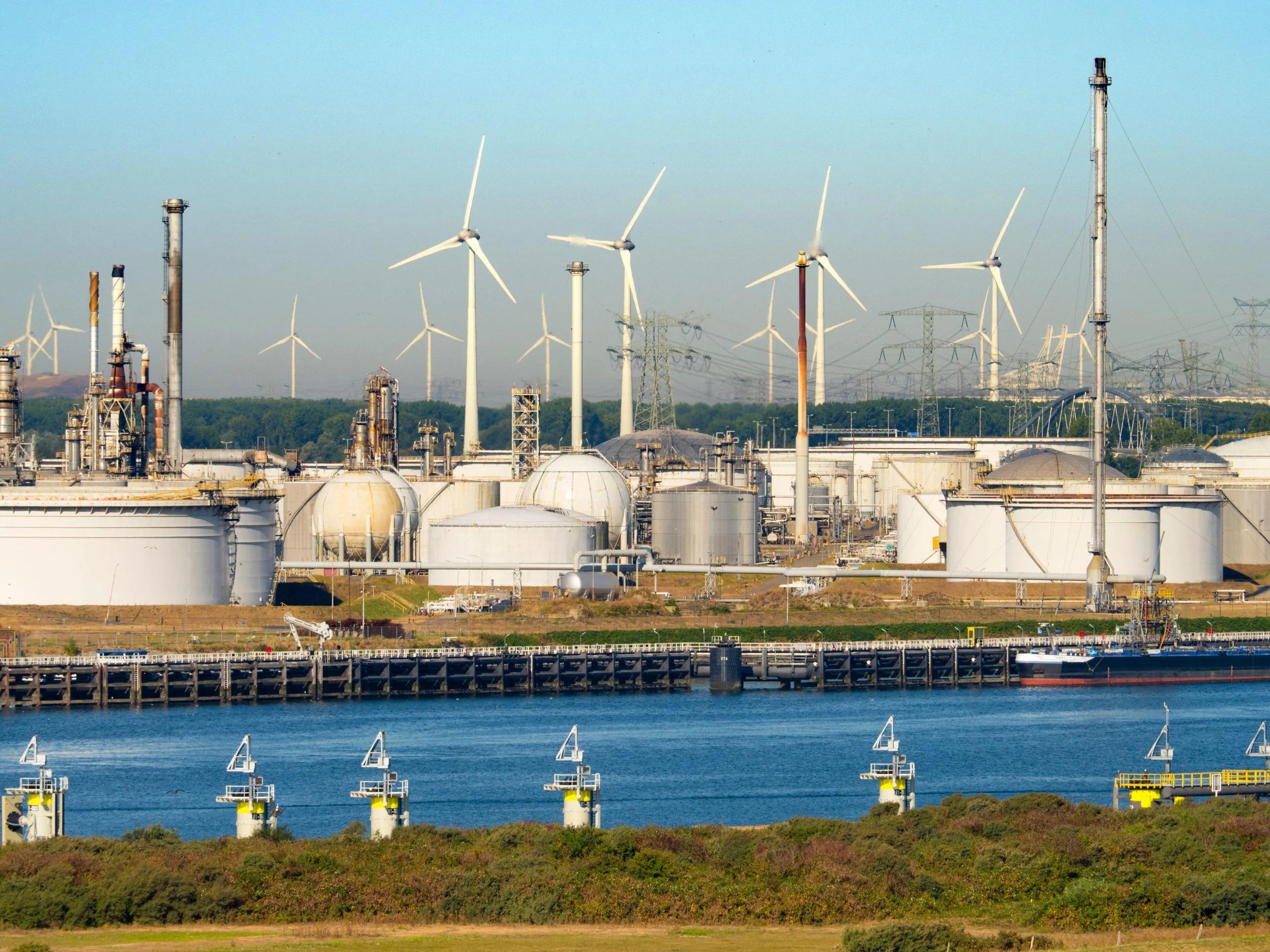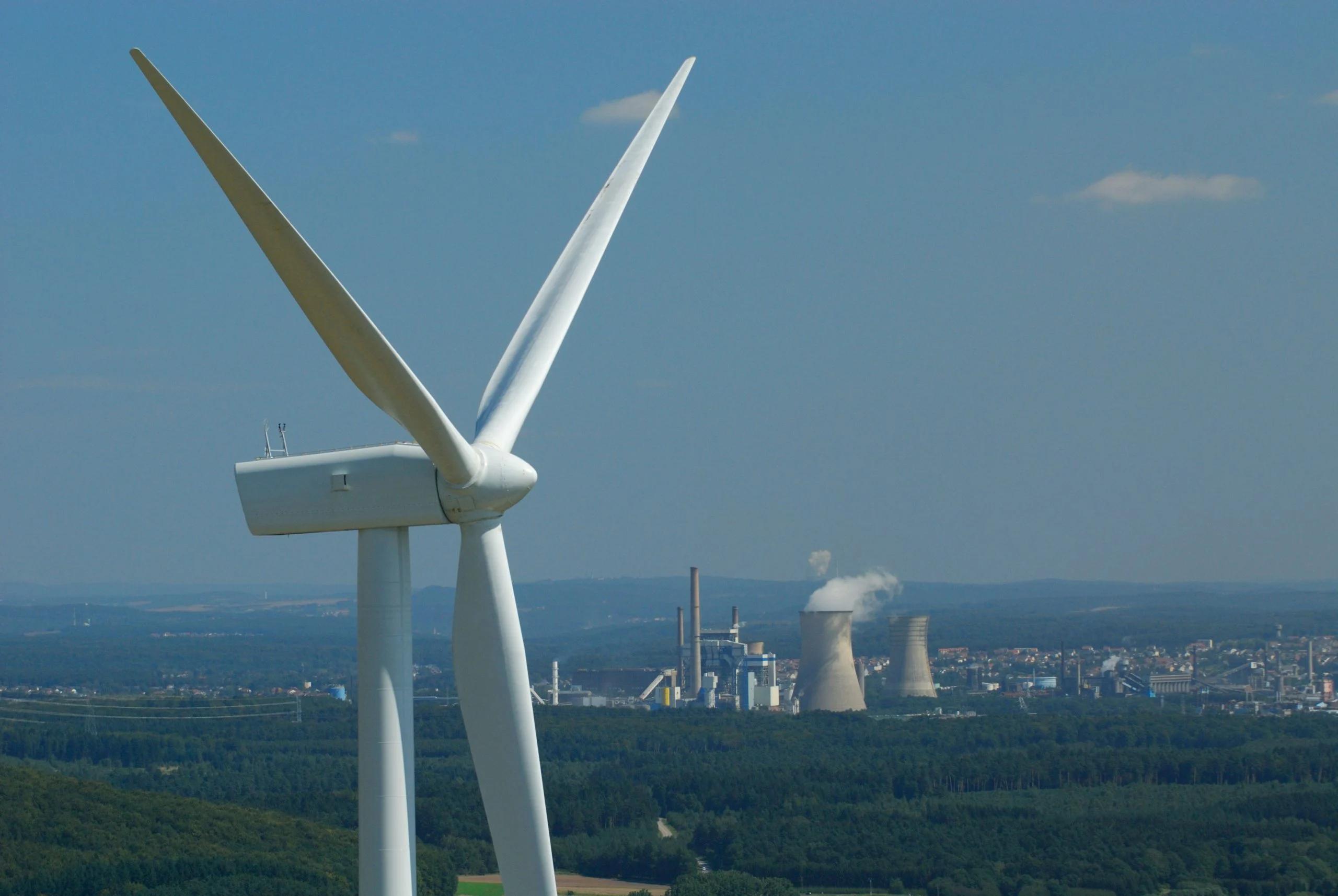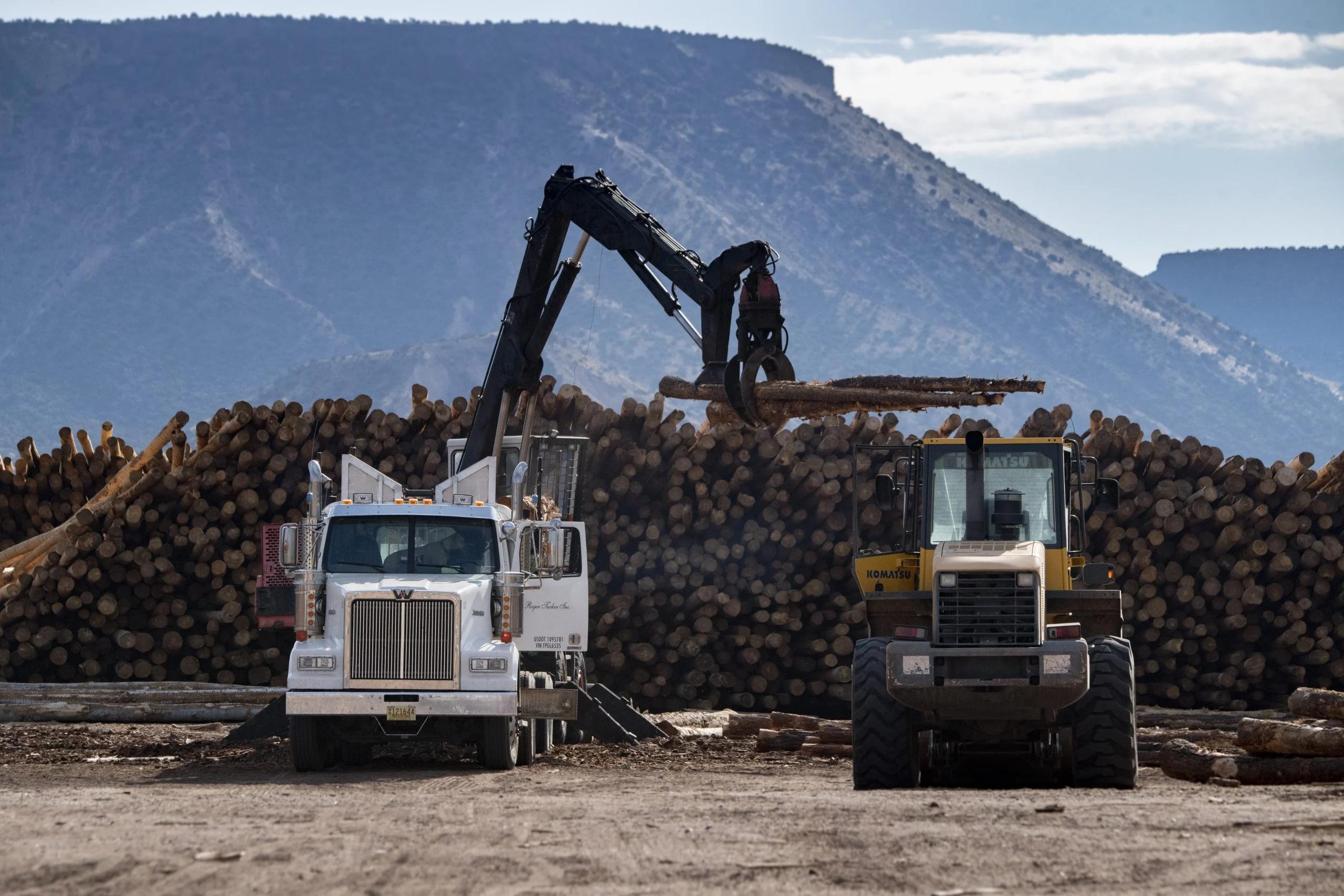
Changing course: Poland’s energy in 2023
Poland hit renewables records and noticed a strong coal decline in 2023, paving the way for the new government to deliver a long awaited clean energy transition.
Disponível em:Polski
Um ano de registros
O ano 2023 trouxe recorde de crescimento de renováveis e combustíveis fósseis em toda a Europa. A geração de carvão da UE caiu 26% em 2023 (-116 TWH) para o nível mais baixo de todos os tempos (333 TWH). Os fechamentos de plantas de carvão diminuíram temporariamente durante a crise energética, mas o declínio estrutural do carvão continua. Estima -se que um quinto da frota de carvão da UE seja fechado até 2025.
Contrariamente às expectativas comuns e suposições por trás dos planos de expansão de gás do governo anterior da Polônia, o colapso do carvão na UE não está resultando em um aumento no gás. De fato, a geração de gás caiu 15% (-82 TWH) em 2023 a 452 TWH, o quarto ano consecutivo de declínio da geração de gás. Por outro lado, a geração da frota de vento da UE superou a de gás pela primeira vez. Em 2023, 44% da eletricidade da UE veio de fontes renováveis. (40% disso proveniente do vento offshore ainda a ser implantado). Coal generation dropped by a record 22 TWh, down to an all-time low of 61% of Poland’s electricity generation in 2023. This was a substantial fall from the previous low of 70% set in 2020.
Poland broke records as well: for the first time wind and solar generated over a fifth of the country’s electricity at 21% in 2023, up from 16% in 2022. The share of renewables reached 27% in 2023 (up from 21% in 2022), not far from the still-official goal of 32% by 2030 (40% of that coming from the yet-to-be deployed offshore wind). Coal generation dropped by a record 22 TWh, down to an all-time low of 61% of Poland’s electricity generation in 2023. This was a substantial fall from the previous low of 70% set in 2020.
The decrease in coal generation in Poland was caused by growth in wind and solar (+7 TWh), a minor increase in gas (+3 TWh), but also by a 10 TWh reduction in domestic power generation. Isso ocorreu devido a uma queda de 5 TWH (-3%) na demanda e aos 2 TWH de exportações em 2022, mudando para 3 TWH de importações em 2023, à medida que a Polônia retornou à sua função de importador de potência antes de 2022. Poland is one of just three EU Member States that have not submitted a draft National Energy and Climate Plans (NECPs), due last year in June 2023. For years, experts have been calling for an update of the NECP and Poland’s Energy Policy until 2040 (PEP2040), a reevaluation of the unrealistic 2049 coal phase out date, and the transposition of key European legislation such as the 2018 Clean Energy Pacote. Os primeiros sinais deste último já estão visíveis. Os planos de expansão da grade com base no PEP2040 e NECP desatualizados resultaram em subinvestimento da grade, levando a um rápido aumento de
The need for a strategy
Despite the positive developments, a dark cloud is still hanging over Poland’s energy future. Poland is one of just three EU Member States that have not submitted a draft National Energy and Climate Plans (NECPs), due last year in June 2023. For years, experts have been calling for an update of the NECP and Poland’s Energy Policy until 2040 (PEP2040), a reevaluation of the unrealistic 2049 coal phase out date, and the transposition of key European legislation such as the 2018 Clean Energy Package.
This lack of strategic direction, vision and planning will compromise just transition efforts in coal regions, weaken Poland’s position among neighbours and the wider EU, and slow down the further deployment of renewable electricity. Early signs of the latter are already visible. Grid expansion plans based on the outdated PEP2040 and NECP have resulted in grid underinvestment, leading to a rapid rise of Conexão da grade diminui para projetos eólicos e solares. A implementação tardia do pacote de energia limpa não apenas impactou negativamente o desenvolvimento de comunidades de energia ou prosumers de energia virtual, mas também causou atrasos na introdução da plataforma de dados centrais de energia (CSIRE) que visava aumentar a flexibilidade do sistema por meio de tarifas dinâmicas ou gerenciamento de demanda. A Polônia pode reduzir os preços de energia por atacado em
Ember’s modelling shows that accelerating renewables and connectivity can bring important benefits. Poland could reduce wholesale power prices by 27% em comparação com um cenário de negócios 2030, resultando em centenas de zlotys salvos por ano por média Homany. Com a eletricidade de carvão de volta a ser mais cara que o gás, a Polônia é mais uma vez um importador de eletricidade e um mercado caro de energia. Isso representará uma ameaça à competitividade econômica do país, a menos que o vento e a energia solar sejam implantados rapidamente.
The updated PEP2040 and NECP should therefore set ambitious targets for renewable energy. By 2030, the country could generate almost 70% of electricity from renewables as shown by multiple modelling studies. By 2040 a target of at least 100 GW of renewables capacity is achievable. This is an important milestone given the recent announcement of ambitious EU-wide 2040 targets by the European Commission.
These strategic energy planning processes should add up to a broader political vision of a country fueled by cheap and clean electricity, attractive for foreign investments, supportive of new industries and with low inflation.
A change in energy transition strategy could come with a regional leadership role. With experience both in Brussels and Warsaw politics, Prime Minister Tusk is perfectly positioned to represent the interests of Central and Eastern Europe (CEE) in the EU, and repair relations with Poland’s neighbours where those are weakened. Poland is the largest energy market in the region and has the biggest chance of becoming a regional power hub — transporting offshore wind electricity from Estonia, Latvia and Lithuania to demand centres in Silesia, Czechia, Slovakia and Hungary. Strengthening transmission lines and cross-border interconnectors will bring benefits across CEE and vastly increase security. This could be Poland’s contribution to the largest regional partnership, the Three Seas Initiative, ahead of the Three Seas Summit in April 2024.
Gas não é igual a segurança
Security is now the focus of almost any energy discussion in Central and Eastern Europe. Russia’s attacks on Ukrainian energy infrastructure have shown that distributed generation and interconnection can provide resilience in times of war. Poland needs to move away from centralised power system planning with single points of failure like Bełchatów, where one incident almost led to a country-wide blackout in 2021.
Os planos de expansão do gás do governo anterior não são um substituto seguro para o carvão-não apenas por causa de sua natureza centralizada, mas também porque o gás deve ser importado. Independentemente do fornecedor, a Polônia sempre estará propensa a flutuações globais de preços de combustível, renegociações contratadas e concorrência de compradores mais ricos, como experimentado pelo Paquistão em 2022 e 2023. A pressão nos mercados globais de gás está aumentando, à medida que a administração de Biden se move para suspender as aprovações de liquidação de gás natural (LNG). Colocar a segurança energética da Polônia nas mãos do GNL importado é uma ameaça à segurança em si. No entanto, os dados de 2023 mostram que o sistema de eletricidade da Polônia já pode gerenciar ações altas renováveis. As ações horárias da eletricidade renovável atingiram o pico de 66%, excedendo em muito a barreira de 50% que foi tratada por alguns como impenetráveis. Um terço das horas em 2023 já mostrou uma participação de eletricidade renovável acima de 32%, a meta ainda oficial de 2030. Mas mesmo que essa capacidade de pico venha do gás, esse seria um papel completamente diferente para o gás em comparação com um nível de base que é descrito no pep2040 anterior. A substituição de unidades de gases em larga escala por outras menores, capazes de aumentar ou diminuir a geração mais rapidamente, resultaria em menor consumo de gás, menor emissões e maior flexibilidade do sistema. de carga inferior do sistema, bateria e armazenamento de hidro-bombeado e geradores de pico, como unidades de gás de ciclo aberto. A interconexão e a expansão da rede também contribuem para maior flexibilidade, facilitando o transporte de eletricidade a partir de locais onde é gerado para lugares onde é consumido. Presume -se que o gás seja a solução padrão para o equilíbrio do sistema de energia, mas seu papel pode estar em breve. O vento e a energia solar estão se complementando ao longo do ano, reduzindo a necessidade de armazenamento sazonal de eletricidade e geração de energia a gás.
Poland’s appetite for gas was fueled mainly by worries about power system balancing. However, data from 2023 shows that Poland’s electricity system can already manage high renewable shares. Hourly shares of renewable electricity have peaked at 66%, far exceeding the 50% barrier that was treated by some as impenetrable. A third of the hours in 2023 already showed a renewable electricity share above 32%, the still-official 2030 target.
Windless winter nights will still require support from a peaking power source. But even if that peaking capability comes from gas, this would be a completely different role for gas compared to a baseload one that is outlined in the previous PEP2040. The replacement of large-scale gas units with smaller ones that are able to ramp their generation up or down more quickly would result in lower gas consumption, lower emissions and higher system flexibility.
It’s time for more flexibility
Multiple sources of flexibility are available for power system operators: including demand side flexibility, in which consumers shift their demand (e.g. heat pump usage, electric vehicle charging, industrial processes) onto times of lower system load, battery and pumped-hydro storage, and peaking generators such as open-cycle gas units. Interconnection and grid expansion contribute to higher flexibility as well, making it easier to transport electricity from places where it’s generated to places where it’s consumed. Gas was assumed to be the default solution for power system balancing, but its role might soon be declining. Wind and solar are complementing each other throughout the year, reducing the need for seasonal electricity storage and gas power generation.
Houve desenvolvimentos positivos para armazenamento no leilão mais recente da capacidade: 1,7 GW de unidades de armazenamento de energia, contratos garantidos, um aumento de 10 vezes em comparação com o leilão anterior. Mas a implementação deles ainda não está certa, devido ao fato de que seu modelo de negócios depende da possibilidade de fluxos de receita dos mercados de equilíbrio, flexibilidade e serviços auxiliares. Isso já levou a eventos de redução. Em dezembro de 2022, foi necessária uma redução de 400-800 MW da geração eólica e, em setembro de 2023, a Polônia notou um excedente de 8 GW de produção de eletricidade, que foi parcialmente gerenciado por exportações de emergência, mas ainda exigiu uma redução forçada de 1-2 GW na geração solar. Capture os preços - o preço recebido pela eletricidade em cada hora em comparação com o preço da carga de base durante todo o dia - está caindo para casos de negócios solares e ameaçadores. É necessário mais armazenamento de bateria e interconexão de curto prazo para estabilizar as receitas de vento e solar e evitar o redução. Como base para o PEP2040 e NECP atualizado. 2030.
Until that is resolved, the flexibility of the Polish power system remains low. This has already led to curtailment events. In December 2022, a 400-800 MW reduction of wind generation was needed and in September 2023, Poland noticed a 8 GW surplus of electricity production, which was partially managed by emergency exports, but still required a 1-2 GW forced reduction in solar generation.
A more structural result of system inflexibility is becoming visible too. Capture prices — the price received for electricity in each given hour compared to the baseload price over the whole day — are dropping for solar, threatening business cases. More short-term battery storage and interconnection is needed to stabilise wind and solar revenues and avoid curtailment.
Recommendations
Several actions need to be taken by the government to enable a lasting and effective clean power transition and reap the economic, social and security benefits that it will bring:
- Build a vision for Poland’s energy system around clean power and use it as a foundation for the updated PEP2040 and NECP.
- Timely implementation of the REPowerEU Recovery Plan chapter, which provides guidelines for the mid-term, until the PEP2040 and NECP are finalised.
- Set a realistic coal phaseout date of 2035 (aligned with capacity market contracts), with coal generation already reduced to a minimum by 2030.
- Torne-se uma voz líder para a colaboração regional, iniciando a interconexão transfronteiriça que reduzirá os preços da energia e aumentará a segurança em toda a região. Facilitar mais ambições de vento, solar e interconexão dentro da iniciativa três mares. Projetos. Relatório
- Remove existing barriers to renewables, such as the 700m onshore wind setback distance, delays in grid investments or smart meter implementation, and the lack of storage and demand flexibility incentives.
- Ensure the timely delivery of the first wave of offshore wind projects.
- Reconsider the deployment of large-scale gas CCGT units, shifting the focus to flexibility solutions, storage and peaking power plants.
- Provide a backup scenario for large scale nuclear units, given the severe delays experienced by projects elsewhere (such as Hinkley Point C in the UK).
Download
Reconhecimento
Foto de capa
WiesLaw Jarek / Alamy Photo Banco
revisores
O autor gostaria de agradecer a Sarah Brown e Ali Candlin do Ember, e Aleksander ° InstitutoReform Institute por seus comentários valiosos. 2025
Related Content




